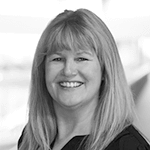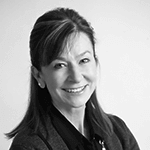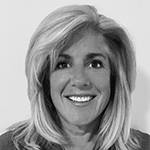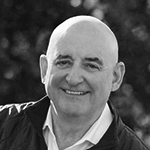Having observed the industry from the inside—in some cases, for 30 years or more— leaders describe the evolution they've witnessed in that time, testifying to an industry that's persistently responsive to the needs of older Canadians.

In our Inspiring Leaders Series, we interview visionaries driven by a passion for excellence that’s manifest in Canada’s most innovative retirement communities.
view all.
Marlene Powner, regional operations manager, Sifton Properties, Ltd.

People are older, coming into retirement homes. When I first started in the industry, it might have been, say, 87. [Now] it's at least 89 that they're coming in. They're waiting [and] there’re a lot of programs that the government is trying, to keep people in their home.
Brad Bushby, VP of sales, technology, and marketing, Schlegel Villages

[They’re] coming in with higher levels of acuity [and] higher care needs, which also makes the product a bit more expensive…
Finding enough staffing to make sure that we can deliver the care that we need to our residents [is] the number one part of our strategic plan in the next five years…I'm [also] on the board at ORCA [and] one of the things that we talk about quite often is ‘How can we attract more people to our sector?’ It's a wonderful place to work! It's incredibly inspiring… We need to influence the younger population that this is a career path that more and more of them should take a look at.
David Bird, president and CEO, Verve Senior Living

People [now] understand the level of experience and knowledge that we have—particularly in senior care and senior living, with the professionals working for us and policies and procedures in place to make sure we can look after people and care for them in a safe environment. There was a lot of confusion over what retirement living was prior to COVID [but] it's changing.
Sharon Toor, CEO, Sagecare Inc.

Our clients are much more informed. They're doing their research first [and coming to us with] a very strong voice…. [They’re] not only informed, they know what they can access at home, what they can ask me for, and what my facility should be able to provide. They’ve done their research into multiple options…. They can question and say, ‘I'm not willing to take this medication. I've done my research. So can we please have a second opinion?’ They’re more vocal because they have a deeper understanding.
Tanya Snow, director, Bria Communities [0:12]

One of the greatest challenges, but also greatest rewards, is shifting towards a more concierge-type model of service. The needs of the senior are so unique that it's like an a la carte. You tell us what you want, and it's up to us to make that happen for you, rather than just saying this is what we provide. And these are the walls in which you can have things. Our goal is for us to really stretch what we do so that the things that they need for their individual quality of life is something that we strive to obtain for them.
Louisa Flinn, vice president sales & marketing, PARC Retirement Living [0:52]

Some of those big changes tend to be in more transparency. That's more transparency in things like pricing, more transparency in the type of value propositions that each of the types of senior living are offering. And also, there's been a big movement into the world of wellness. And that's very near and dear to my heart, because I come … from that industry as well. Having been in the fitness industry as a secondary job for me my entire life.
So, I found that the senior industry has really moved more to the active living, the wellness, the sort of holistic aspects of how to live a much better, healthier life as we age.
Tony DiFruscio, president, St. Elizabeth Village [1:38]

Our residents originally looked for housing, you know, housing for retirement. And it was a place to live. The twist here is this is about a better place to live. This is not just about housing. This is about lifestyle. And the focus on lifestyle has really accelerated significantly. People come to us for lifestyle now.
Angela Kelly, director of operations, Estates of Niagara [2:10]

So, we know that the baby boomers, one of the biggest generation [is growing older], and in the next 20 years, they're expecting even approximately 65 percent more seniors requiring some sort of housing or community to live in. The baby boomer or the 50 plus active adult, right now, is looking for a retirement lifestyle, not a retirement home.
So in that lifestyle, they're looking for that adventure, that fun, a resort type setting, which is what we are trying to offer here at Estates of Niagara. In that resort type setting, they will have the option to take advantage of amenities and services as they need them, they will have the option to age gracefully.
Ernie Hee, executive vice present, OPAL by Element [3:05]

Wearables, which are technology dealing with monitoring your own health, is another trend that we're seeing a great deal of. So everybody now can put their finger in a fingerstick and they can tell their oxygen level. They can check their pulse by themselves. So that’s brand new and I think it's going to expand.
And then the whole technology with respect to virtual medicine, which is definitely coming, I think our residents are seeing that it's not always necessary to go visit the doctor.
Marie-Josee Lafontaine, owner and operator, Scarborough Retirement Residence [3:36]

The biggest change that's happening is really with the consumer. What are their needs, and what do they want, and what are their expectations? And so, we're probably going to see a little bit more diversity of product because there's going to be a larger, more visible segmentation of our senior market that is going to be attracted or is going to need different products. One size will not fit all.



